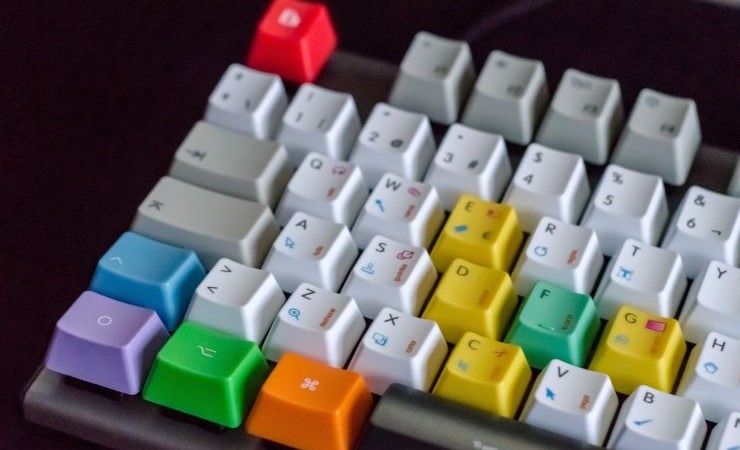Tips for Switching to Teaching Online: Archived Webinar
In response to the COVID-19 pandemic, many universities around the world are having to switch to online teaching and remote learning at scale and at speed. To support faculty in this big and disruptive change, SAGE Campus is hosting a series of webinars on “Top Tips for Switching to Teaching Remotely.”
The first webinar, which appears below, featured Tom Chatfield and Elspeth Timmans, who created the SAGE Campus Critical Thinking online course, discussing key questions from faculty about the shift to teaching remotely. Chatfield is a writer, broadcaster, tech philosopher and educator. He’s interested in improving our experiences and understanding of digital technology. Check out his website. Timmans is an experienced instructional designer and director of Jigsaw Learning, which provides no nonsense consultancy for distance, blended and e-learning.
Underneath the recording of the webinar, Chatfield and Timmans answer many of the questions from the audience they couldn’t get to in the hour-long event.
Questions and Answers
I agree that design of the course is what matters. So… is a very well designed online course as good as a very well designed in person event?
I think this depends on the desired outcomes and what you’re measuring as “good.” Broadly, I think great online design can create outcomes as good as anything in person, but what’s offered won’t be the same as an “event” as the gains are likely to come from an effective blend of synchronous and asynchronous. The hardest (and most important) stuff to replicate online is the sociable, serendipitous side of things; the greatest advantage online learning offers is that of rapid iteration, incorporating feedback, and facilitating interactions between participants as well as personal preparation and reflection. If you make full use of the variety of types of learning experience you create online, and types of time and attention, you can probably offer more in terms of learning that an in-person event – so long as you’re prepared to learn alongside your learners, and you don’t see yourself as trying to replicate an event experience!
Do you count posting lectures online as part of online teaching?
It all counts! Online teaching can be a misleading phrase, in that what you’re really talking about is the sum total of someone’s learning experience as they move between resources as varied as textbooks, videos, audio, websites, Learning Management Systems, live and asynchronous interactions, webinars and chats, and so on – and the most useful view will always tend to be a joined-up one that tries to take in student’s lived experience and the interaction of these varied components.
Online lectures can be great, if they’re linked well to other things and made as useful as possible in digital terms, which generally means clear audio and video, generating a transcript, having good clear slides or visuals as appropriate, and having follow-up resources around them encouraging further research, questioning and discussion. Indeed, if there’s a perfectly good lecture or resource out there already, why not point students towards that pre-existing resource and then pour your own effort into the materials and interactions around it, enhancing and supporting their learning experience rather than reinventing a perfectly good wheel.
What thoughts do you have for our potential for overloading students with the amount of asynchronous work we expect students to do? How might we gauge our expectations?
This is difficult, especially where you are asking students to undertake research and exploration / self-reflection. In terms of a rule of thumb e-learning professionals use a 4 to 1 ratio in terms of content i.e. four hours presented in the classroom can be distilled into one hour online (in terms of structured content). But this doesn’t take into account learning time for the student which can vary very considerably based on their levels of prior knowledge, the approach they take to learning online, their environment and so on.
One of the most effective ways to avoid overloading students is to actually add timings to each of the activities you ask them to complete asynchronously. This is the norm in professional training, LMS-mediated programmes, CPD and so on. If you create structured asynchronous activities and are able to provide guide timings, and if appropriate, guide marking schemes, this can be very helpful in ensuring you aren’t setting too much work, but also in helping students to know when to stop! It’s hard to overstate the importance of setting expectations for students who are also new to this process and who will likely be in contact with others and getting wildly different estimates of requirements.
I’m finding that affective filters seem to be lower in the online environment/flipped delivery. Do you have any thoughts about that?
I think there’s both a great benefit, and a real need, to being more directive and explicit in an online situation about attitudes, expectations and the affective side of things. One of the reasons people complain of Zoom fatigue and so on is the intensity of the emotional labour required to sustain engagement with people through screen-based interactions. In general, I think it’s useful to consider what the most supportive and empowering emotional interactions and encouragements tend to look like in other online arenas such as social media, and how you can strike a facilitative tone that acknowledges how effortful things may be, how uncertain people may be feeling times – and that this is okay, and can be shared and explored with peers and instructors, in appropriate and respectful ways. So far as possible, you need to set aside more time for this kind of interaction; it may well even be that this is the bulk of the work you can most valuably do, in terms of framing and facilitation and encouragement, rather than generating materials as such.
At postgraduate level, flipped classroom learning is already expected. What you’ve been discussing in the webinar sounds like using the case method. What would you say is different now because of the COVID-19 situation?
I think one of the main differences because of the COVID-19 situation is that there is an (almost) global recognition between students and teachers that the ‘bargain’ has shifted and that roles and responsibilities have changed. Prior to the pandemic I think there remained the expectation that the teacher would supply everything – lectures, handouts, reading lists etc. now students are realising that that model doesn’t sit comfortably with online delivery and are looking for more engagement than before. The case method is very effective for promoting engagement for online/distance/asynchronous learning because it provides a structure for self-directed research and reflection which is necessary to support students who are uneasy with taking control of their own learning.
However it is just one approach, the key I think is to focus back on the cognitive objectives, the students and the content and consider different strategies for individual topics – COVID has given us the opportunity to vary instructional styles and media more than before.
Can you suggest any good platforms for social interaction wider than Zoom? Particularly for replicating coffee breaks or networking?
Slack can be useful for causal but responsible chat. Simply logging into Zoom calls a little early, having some informal time at the end, and using breakout rooms, can build some informality into that kind of interaction. A responsibly used WhatsApp group can also be good for peer discussion and support; and students can set up their own discussion and mentoring groups through things like Google Hangouts, or use Google Docs for collating questions and comments, or the Microsoft Suite equivalents. Perhaps the first port of call should be looking at the social features you can enable via your institution’s LMS; these are often very limited, but messaging within an LMS can be effective; and can link out to collaborations on Google or Microsoft platforms. Offering clarity about purpose and conduct and expectation is important, here – together with encouraging and celebrating mentoring and mutual support.
Can you recommend any guidance documents for online conduct?
There are some brief, helpful guidelines here on the Open University site that I think are particularly relevant to an academic context, both in terms of conduct and as more practical guidance on useful ways of posting to online communities.
What are your thoughts on using a traditional phone call for personal discussions? I am wary of giving out my phone number to students.
I think this is an excellent way to engage with students, but agree it can be difficult to connect safely. I would suggest looking to create a number only for tutoring purposes, you can do this through Skype or Google – you can also use telephone / video conferencing apps (GoTo meeting, Zoom, Skype, Microsoft Teams etc.) to host these discussions without sharing a number at all. This would allow you to achieve the outcome without blurring the personal and professional.
I would also consider publishing some ‘surgery hours’ during which students can call – this allows you to better manage your time and set boundaries. Earlier in this thread there is a question about behaviours online – I would suggest creating something similar for these discussions, so you have established expectations from the outset.
When you maintain anonymity in feedback, how do you measure the level of participation of every member in the group?
This is a significant challenge! Realistically you can’t and this is where you are trading some visibility of participation / activity with the ability of students to remain anonymous. Where you are using polling or activity apps such as Mentimeter.com or Kahoot, you can see how many participants have responded, but can’t pinpoint individuals.
I would probably seek to mix the types of activity and levels of anonymity required so you can manage participation more effectively. My perspective is also always based on taking a ‘programme’ approach i.e. using a mixture of methods for different content / topics / objectives so although you may have concerns about participation in one activity, this is compensated by other activities which require active and named participation.
There are some interesting reflections in this paper.
Do you have any tips on how to avoid cheating in online exams or quizzes, especially when working with large groups?
I don’t feel I have much expertise on this front. I am, however, very sympathetic to the idea that (so far as possible) it’s a really good thing for online instruction to encourage “cheating” if by cheating what is meant is research! i.e. ask questions about the evaluation and integration of online sources, which assume basic factual knowledge and test second-order understanding, and that explicitly direct people to interrogate eternal sources. There’s also the point that a well-constructed online test can often be framed as a tool for students, enabling them to see where they need to consolidate and revise, and celebrating what they already know – i.e. it’s a diagnostic tool for them and for you, working together. So far as possible (and this may not be possible for final exams and big summative assessments) I think the online shift is a valuable opportunity to shift towards more facilitative, diagnostic and knowledge-consolidating uses of testing.
When supporting people entering demanding professional social and community work situations, where they need to create open relational experiences, there are severe limits to online learning.Can you explore the interface between the importance of basic understandings essential to this work with the need to encounter, mediate, reconcile as practitioners?
This is not an area I have worked in a lot, but I have had good experiences of action-learning sets in the context of the humanitarian sector, nursing and civil service education. Although these activities are not necessarily conducted online, they are conducted at a distance, often involving individuals from different organizations and in different locations. The process of peer supported reflection, focused on specific challenges has good outcomes in terms of embedding learning. I have a couple of references here and here which might be useful.
I would also suggest contacting the Open University. They have considerable experience in delivering social work programmes at a distance. Technologically it is also worth unpacking what type of environment and interaction you are trying to create / support and looking at more specialized tools to enable – for example do you need to host one-to-one, one-to-many, small self-managed groups? Could some interactions be restructured for asynchronous delivery, could you create branched or decision-based activities with consequences which can be brought to discussion etc.
Can you point me to some research on lecturing being a problematic teaching approach? I have only found studies related to MOOCs, which are a different sort of beast from small classrooms.
It’s not about saying that lecturing is not always a problematic teaching approach – but that the instructional design should be appropriate to the context (audience, objectives, content. The challenge is when lecturing is the one-size-fits-all default and does not consider the context. It’s also important to consider when and how the classroom sessions are used – following student pre-work and personal research to consolidate and discuss ideas is likely to be much more effective than as ‘information transfer’.
The main criticism of lecturing is around learner retention i.e. students don’t retain what they have been taught in the classroom because of the ‘forgetting curve’ and the need for spaced repetition. In terms of meeting cognitive objectives and learner retention, asynchronous activities (usually) score higher than in person because of the spacing / reflection / self-paced nature of the approach.
A good place to start is with Richard E. Mayer’s work, he has done a lot of research into the effectiveness of different teaching methods and how to adopt multimedia in classrooms and online: check out this video and this page.
See also the learning scientists and follow Steph Moore on Twitter – she’s great for referencing all of her advice to the evidence base.
Where’s a good starting point to access resources and high quality content that already exist that we can use in teaching?
SAGE has compiled this handy webpage of open resources to help you teach online!
Can you recommend good articles on developing an online class and doing it well?




























































































